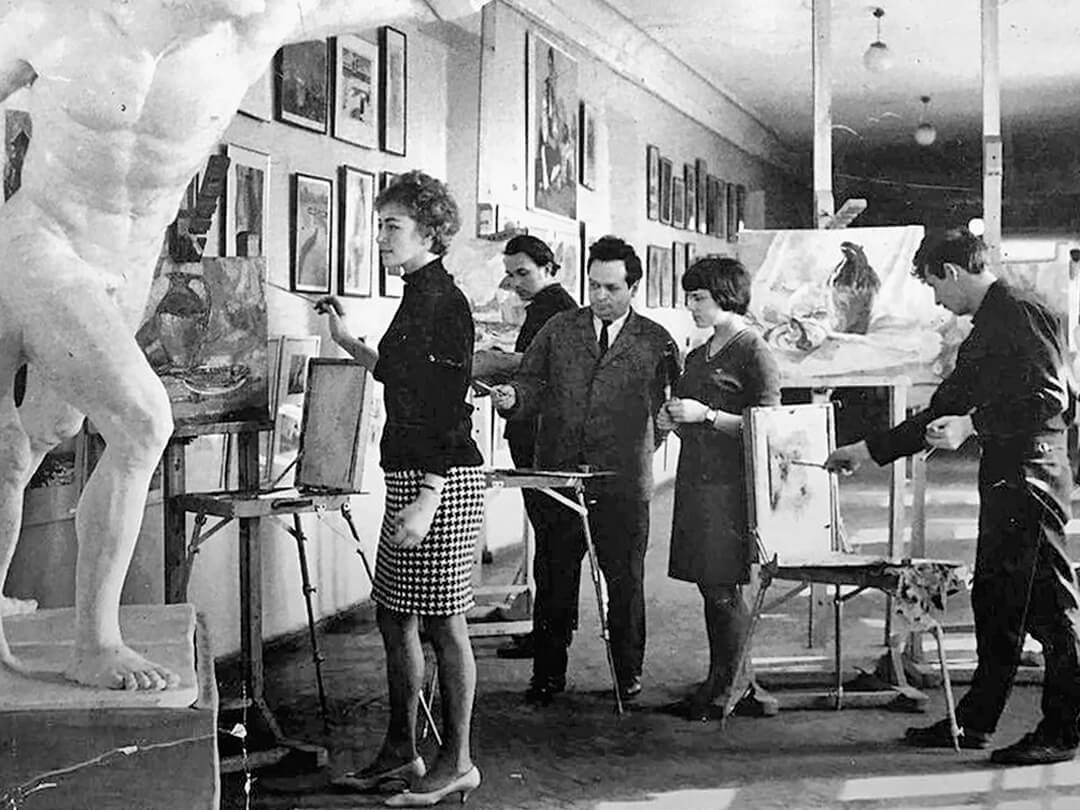
April 7, 2025
A Painter and Mentor of Generations: On the 100th Anniversary of the Artist’s Birth
April 7, 2025, marks the 100th anniversary of Valeriy Arutyunovich Geghamyan—a painter, teacher, and intellectual whose presence transformed the artistic landscape of Odesa and, more broadly, Ukrainian culture in the second half of the 20th century.
Born in the ancient Armenian village of Garni, Geghamyan inherited traditions of spiritual culture, intellectual pursuit, and artistic reflection. His childhood was steeped in books, music, and art—in a family that valued learning and aesthetics. Even in his youth, he stood out as a talented painter, writer, and philosophical observer.
Formed Under the Influence of Sarian
The defining moment for the young Geghamyan was his acquaintance with the classic of Armenian modernism, Martiros Saryan, who was friends with the artist's family. Saryan not only supported the boy, he opened up the world to him as a great metaphor in which beauty and pain, harmony and tragedy coexist.
Education, Pedagogy, Odesa
After studying at the Yerevan Art Institute, Geghamyan went through several key stages of personal and creative development. In the 1960s, he settled in Odesa, where he began teaching and became one of the founders of the Art and Graphic Faculty at the Odesa Pedagogical Institute. His teaching was not about copying classical models, but about revealing the student’s inner vision.
Among his students were major figures in contemporary Ukrainian art: Valentin Zakharchenko, Yevgeny Rachmanin, Vasyl Ryabchenko, Oleksandr Roitburd, and many others. They remembered Geghamyan as someone who not only taught but inspired them to think, doubt, and feel.
The Art of Impression
Geghamyan left behind a powerful artistic legacy. His paintings are a blend of color, form, and tonality—merging modernist influences with folk motifs, hints of symbolism and Fauvism, and a deep love for Hutsul imagery and memories of Armenian mountains.
His visual language is multifaceted: not a rational construct but a world of emotional perception. He often said:
“Art is not technique. It is impression. And if you are a true artist—impression must become form.”
Diaries as a Source of Artistic Philosophy
An important part of Geghamyan’s legacy is his personal notes and diaries, where he recorded observations, dreams, fragments of conversations, and excerpts of literature. These writings are more than intellectual notes—they’re a map of his inner world and a key to understanding his artistic philosophy: art as a transformation of reality through emotion.
Legacy and Influence
Although in his later years Geghamyan stepped away from the official art scene, his name is gradually returning to cultural discourse. In the 2020s, major presentations of his work took place in Odesa and Kyiv. Online projects and archival publications are introducing new generations to his art.
His pedagogical school continues to live on in the visual language of his students, and his view of art as a deeply human and philosophical practice remains highly relevant.
Toward the Anniversary
The year 2025 offers a moment to reconsider Geghamyan’s legacy as a cultural phenomenon. His life exemplifies the synthesis of two cultures, the power of intellectual art, and the enduring influence of a remarkable personality. He was more than an artist—he was a guide to the inner paths.